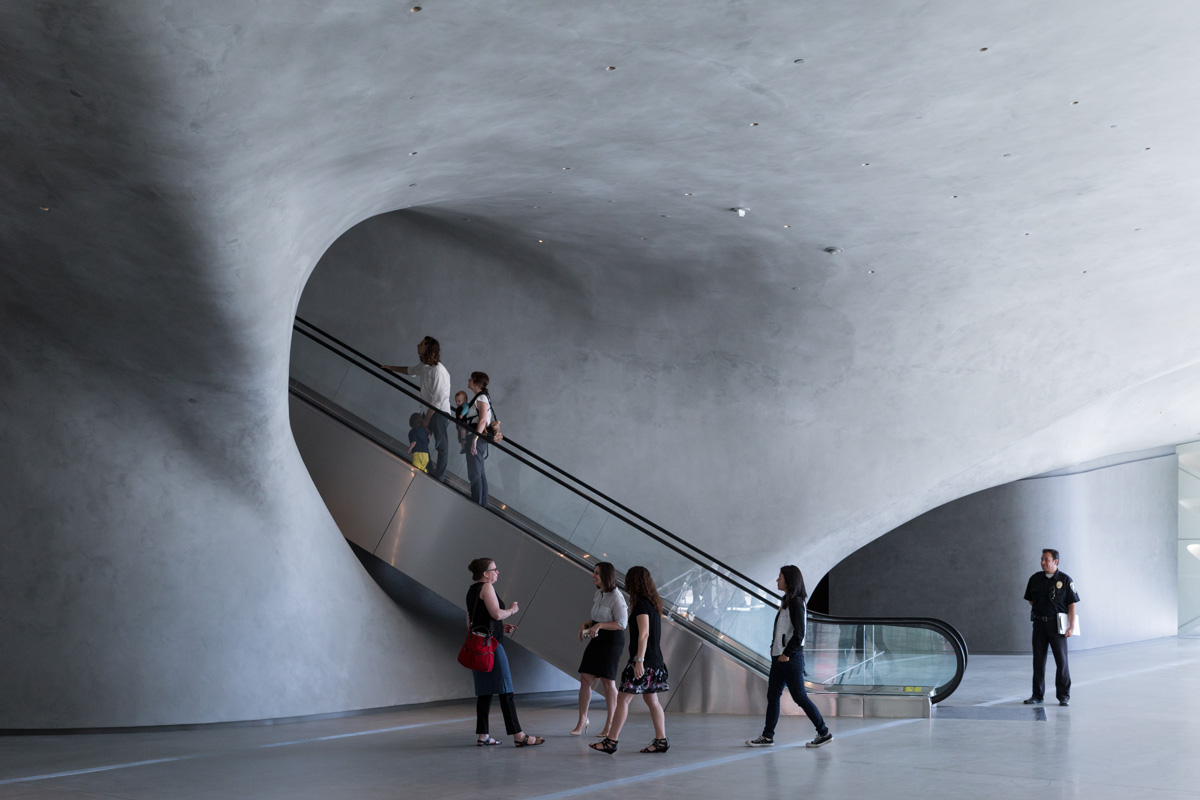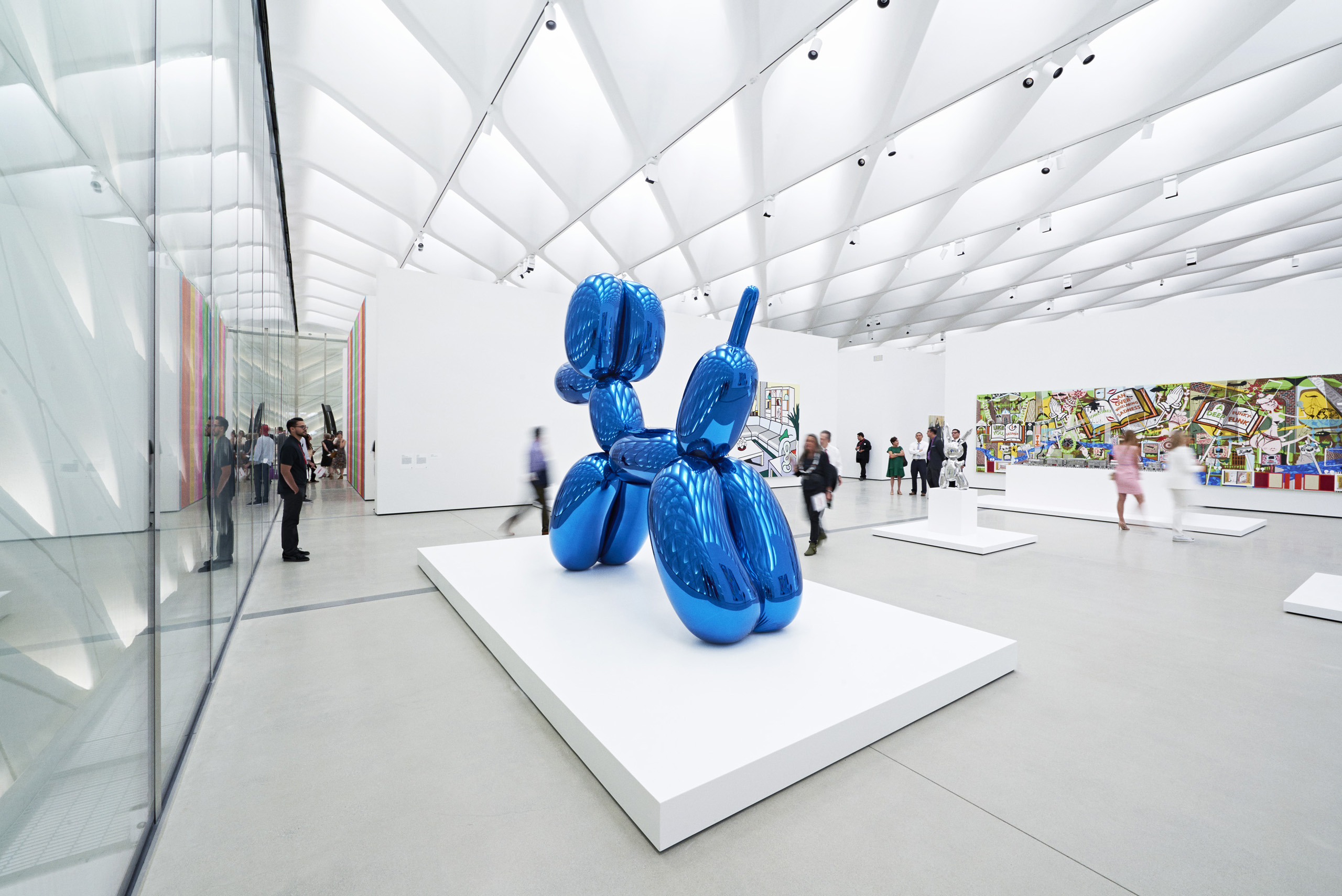Please wait ...
The Broad is a contemporary art museum on Grand Avenue in Downtown Los Angeles. The museum is named for philanthropists Eli and Edythe Broad, who financed the $140 million building which houses the Broad art collections. The museum offers free general admission to its permanent collection galleries. It opened on September 20, 2015.

Since 2008, Eli and Edythe Broad and the Broad Art Foundation had been considering different sites for a museum for the art collection. In November 2008, the news surfaced that Eli Broad had approached Beverly Hills about building his museum at the southeast corner of Wilshire Boulevard and Santa Monica Boulevard. In January 2010, he revealed that he was considering a 10-acre parcel on the campus of West Los Angeles College in Culver City. Meanwhile, in March 2010, the Santa Monica City Council approved an agreement in principle to lease the city-owned 2.5-acre parcel next to the Santa Monica Civic Auditorium to Eli Broad for $1 a year for 99 years while also contributing $1 million toward design costs. Broad would have paid the rest, an estimated $50 million to $70 million.
In August 2010, Eli Broad announced formally that he would build a museum in Downtown Los Angeles. He agreed to pay $7.7 million for a 99-year lease. Officially characterized as a grant, the money subsidized affordable-housing units at The Emerson, a high-rise residential tower next to the museum. The agreement also includes an $8.5-million government share of the cost of the museum's outdoor plaza and government payments of up to $30 million to reimburse Broad for building the museum's underground parking garage. Under that buy-back provision, the garage eventually will be government-owned.
The Broad is housed in a new building designed by architecture firm Diller Scofidio + Renfro and structural engineering firm Leslie E. Robertson Associates. The final building costs are estimated at $140 million. With a location adjacent to Frank Gehry's iconic Walt Disney Concert Hall, the museum's design is intended to contrast with its bright metallic perforated exterior while respecting its architectural presence by having a porous, "honeycomblike" exterior. The building design is based on a concept entitled "the veil and the vault". "The veil" is a porous envelope that wraps the whole building, filtering and transmitting daylight to the indoor space. This skin is made of 2,500 rhomboidal panels made in fiberglass reinforced concrete supported by a 650-ton steel substructure. "The vault" is a concrete body which forms the core of the building, dedicated to artworks storage, laboratories, curatorial spaces and offices.

The three-story museum features 50,000 square feet (4,600 square metres) of exhibition space on two floors, with 35,000 square feet (3,300 square metres) of column-free gallery space on the third floor and 15,000 square feet (1,400 square metres) more on the first. The roof has 318 skylight monitors that let in diffused sunlight from the north. In the non-Euclidean lobby, there is no front desk; instead, visitor-services associates greet guests with mobile devices. Lobby and exhibitions spaces are connected by a 105-foot escalator and a glass-enclosed elevator.
Museum plaza
In early 2014, plans were published for a 24,000 square feet (2,200 square metres) public plaza adjacent to the Broad, to be overseen and maintained by the museum as part of its agreement with the city. Designed by the museum's architects, Diller, Scofidio + Renfro, and landscape architect Walter Hood, the plaza, with other streetscape improvements, is estimated to cost $18 million, with about $10 million coming from redevelopment funds and $8 million from the museum. It features a grove of 100-year-old Barouni olive trees.

Construction
The museum's unorthodox facade, which the architects refer to as the "veil," has proved very tricky to fabricate, leading to delays in the construction schedule. In a lawsuit filed in Los Angeles County Superior Court in 2014, the museum sued German fabricator Seele GmbH, Zurich American Insurance Company, and the Fidelity and Deposit Company of Maryland for $19.8 million in damages for allegedly failing to deliver the components of the "veil" facade on schedule. The Broad and Seele subsequently agreed to continue work on the museum and to face off later over the dispute.

The Broad houses a nearly 2,000-piece collection of contemporary art, featuring 200 artists, including works by Cindy Sherman, Jeff Koons, Ed Ruscha, Roy Lichtenstein and Andy Warhol, the latter including a 1963 "Single Elvis". The Broads suggested in 2015 that it was acquiring the "Single Elvis" which sent the price of pop art to unprecedented levels.
Other notable installations include Yayoi Kusama's Infinity Mirrored Room – The Souls of Millions of Light Years Away (2013), Ragnar Kjartansson's expansive nine-screen video The Visitors (2012), Julie Mehretu's 24-feet-wide canvas Beloved (Cairo) (2013), and Goshka Macuga's photo-tapestry Death of Marxism, Women of All Lands Unite (2013). With currently 129 pieces, the museum owns the largest collection of Cindy Sherman works worldwide.

The collection has been described by the Washington Post as including too much "high-end trash" but "even though the bad overwhelms the great, there are great works throughout."